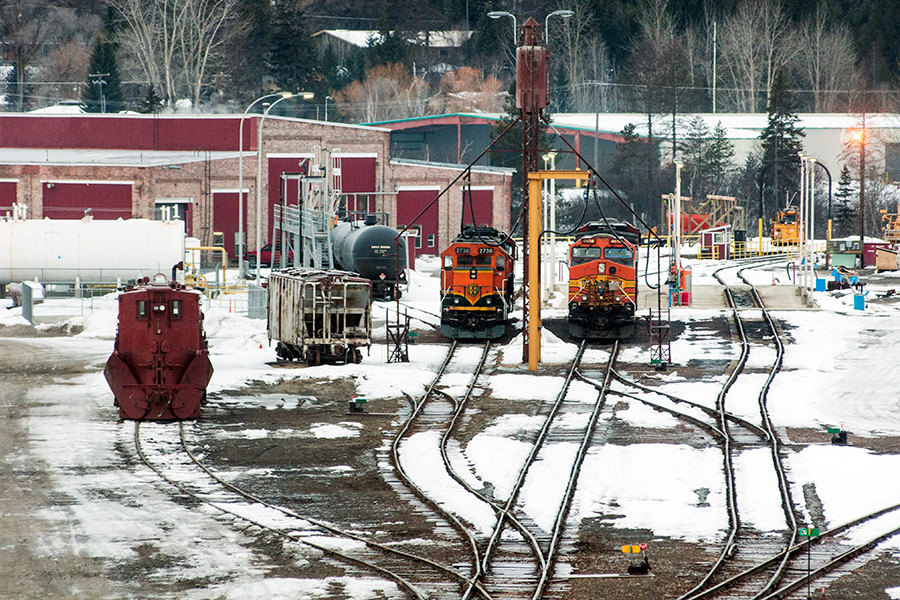WHITEFISH – Officials with the Montana Department of Environmental Quality on March 12 updated residents on the progress of a state Superfund cleanup on the Whitefish River and at the Burlington Northern rail yard, where crews have been working for years to address soil and groundwater contamination.
DEQ project officer Jessica Smith said the cleanup is part of an ongoing project involving the BNSF Railway’s rail yard in Whitefish that was first studied in the 1970s. With the Whitefish River cleanup complete, the focus has shifted to the rail yard itself.
The state environmental agency and the U.S. Environmental Protection Agency began studying the industrial contamination in and around the Whitefish rail yard when it was owned by the Great Northern Railway and later the Burlington Northern. The rail yard and sections of the Whitefish River were designated a state Superfund site and in the years since, the railroad has worked with agencies to clean the area. It also installed an interceptor trench between the rail yard and the river to block contaminants that might be moving through the ground.
In 2007, the EPA investigated a petroleum sheen on the Whitefish River and, after taking samples in the area, ordered BNSF to clean the river along the rail yard. Two years later, crews began excavating petroleum-contaminated soils from the Whitefish River, and in August 2013 completed a four-year cleanup of the waterway, removing 26,000 cubic yards of contaminated sediment and backfilling it with river rock.
With the river cleanup complete, BNSF and the DEQ are focused on cleaning the rail yard itself. Smith said the railroad and DEQ are in the process of finalizing a risk assessment to guide contractors in the eventual remediation, and while it’s difficult to tell when the final rail yard cleanup would begin, she added that the completion of the river project shows that progress is being made.
The 78-acre locomotive fueling and repair facility has been in operation since 1903. Smith said releases associated with fueling, repair, railroad operations, and wastewater transportation to the lagoons have resulted in soil and groundwater contamination by petroleum products – mostly diesel.
DEQ has required BNSF to produce a Human Health Risk Assessment and Feasibility Study for the facility, which will identify and evaluate cleanup options. The DEQ will then select a preferred cleanup plan, publish it for public comment and implement a final cleanup plan.
BNSF is also performing sampling to evaluate the ecological health of the Whitefish River. Sampling will demonstrate whether the Whitefish River has successfully reestablished organisms that live in the sediments.
“The river is cleaner now than it has been in a long time, so we are all expecting to see that its ecological health is rebounding,” Smith said.
